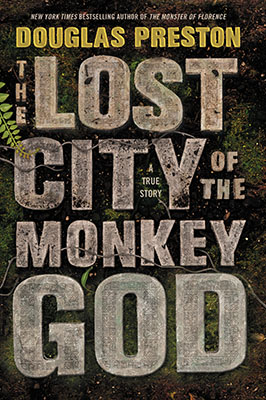“The Lost City of the Monkey God: A True Story” (Grand Central Publishing), by Douglas Preston
To pigeonhole Douglas Preston a true-crime author is a gross understatement of his skills as a writer. Yes, his many best-sellers with Lincoln Child are fun, suspenseful romps chronicling the adventures of an FBI agent. But he’s also an extremely capable investigator who, along with Italian journalist Mario Spezi wrote 2008’s fabulous “The Monster of Florence: A True Story,” a spellbinding work of nonfiction about a series of grisly murders in Tuscany.

This time, the subject matter is equally compelling — an ancient and sacred city in Honduras known as the White City or the Lost City of the Monkey God. For generations, indigenous people passed along stories of ancestors who fled there to escape Spanish invaders and that anyone who entered would get sick and die.
In 2012, Preston joined a group of scientists, archaeologists, photographers and film producers who traveled to La Mosquitia, an unexplored and dangerous region of Central American jungle. They faced floods, mountains, jaguars, deadly snakes, disease-carrying insects and other inherent challenges. They brought along a new piece of NASA-owned laser technology known as LIDAR or Light Detection and Ranging, which confirmed a sprawling metropolis inhabited around the same time as the Mayan civilization in modern-day Mexico. Their intent was to map the city as well as explore and protect its rumored riches.
Preston unspools the history of the White City, the expedition and the journey itself in detail — sometimes in too much detail. The book originated as an article in National Geographic and it may have been a better story if kept restrained to magazine size. Lengthy discussions of scientific equipment, aircraft, landing zones and, later, infectious diseases, while fascinating on their own, feel somewhat superfluous and ill-placed.
The latter especially — an in-depth history of smallpox and other deadly diseases that systematically wiped out indigenous peoples — was a compelling read, but its contribution at the end of this book felt out of place.
It’s possible that part of the dissatisfaction at the conclusion of this tale was rooted in the dissatisfaction in the expedition itself. While a remarkably important scientific discovery, the team’s chief archaeologist decreed nothing could be excavated from the site at the time, which feels anticlimactic to the general public — and readers. (AP)




